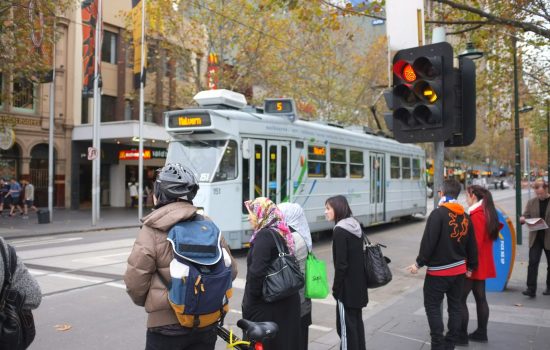Receiving a visa refusal or cancellation notice is a stressful experience.
Our migration lawyers can talk to you about your visa appeal options and the best way to prepare your case at the Administrative Appeals Tribunal.
What sort of visa appeals go to the AAT?
The Administrative Appeals Tribunal (AAT) has two main divisions that affect migration matters:
- The Migration and Refugee Division – This division is responsible for reviewing most visa refusal decisions made by the Department of Home Affairs
- The General Division – This division is responsible for reviewing most character-related visa decisions or citizenship refusals
The AAT has the power to review matters that relate to decisions about bridging visas, family visas, nomination/sponsor applications, partner visas, permanent business visas, skilled visas, student visas, temporary work visas, some visitor visas, some humanitarian visa categories and citizenship.
The AAT does not review decisions relating to fast-track humanitarian visas. Please refer to our page on the Immigration Assessment Authority (IAA).
What visa-related powers does the AAT have?
As mentioned above, the AAT has the power to review a range of migration related decisions. The AAT will conduct its own independent assessment of your application.
Through the appeal process the AAT will review:
- All documentation, evidence, forms and interview records held by the Department of Home Affairs
- All submissions or evidence submitted by you to the AAT
- All evidence supplied at your hearing
The AAT also has their own independent powers to conduct investigations. If, during this process, the AAT comes across any adverse information against you, or anyone involved in the visa refusal appeal, they will notify you in writing and ask you to comment on this information. We generally recommend you obtain legal advice if this happens.
What is the process for an appeal in the AAT (Migration and Refugee Division)?
The general process of an AAT appeal in the Migration and Refugee Division is as follows:
1. Lodge your appeal application to the Administrative Appeals Tribunal
It is very important to do lodge your application within the provided time frame, which can be as little as 2 days. The best way to lodge your application is online.
When applying for an immigration appeal be sure to upload the required supporting documents needed to immediately begin the appeal process. This is normally the email or letter notifying you of the refusal or cancellation of your visa and a copy of the decision. You will be allowed to provide further documents to the AAT at a later stage.
You should also pay the fee if required. Some AAT appeals are free or you may be eligible for a reduced fee.
2. The AAT will then send you a confirmation of application letter
3. You should start preparing your appeal case
We recommend that you carefully read the Department of Home Affairs decision and the reasons your application was unsuccessful. The best strategy for case will depend on your individual circumstances. Often it will involve:
- Preparing a statement outlining your explanation of different aspects of your case
- Obtaining supporting evidence such as medical reports or letters of support
- Identify people who could be witnesses to support different aspects of your case
- Doing legal research to explain why your case should win at the AAT
4. The AAT will send you a hearing invitation letter.
Prior to the hearing the AAT may also ask you for further information or certain documents to help complete their assessment of your appeal. Even if the AAT does not request it, we generally recommend you provide the AAT with updated information and documents explaining why the Department of Home Affairs made the wrong decision in your case.
In some cases the extra information or documents you provide may mean a hearing is no longer required and a positive decision is made on your case. However, this is quite uncommon.
When you receive the hearing invitation letter you should complete it and return to the AAT. This generally requires you to confirm if you need an interpreter for the hearing and to include the details of any witnesses you may plan to bring.
5. You attend your AAT hearing with your witnesses and migration lawyer (if you are represented).
The AAT hearing is an important opportunity to explain your circumstances in person and to answer any questions the Tribunal member may have. The AAT will provide you with an interpreter if you need one. You can bring witnesses to the hearing to provide evidence as well. You should tell the AAT in advance if you plan to bring witnesses with you.
Your migration lawyer may also provide legal arguments at the of the hearing in support of your case.
6. The AAT may ask for more information or documents
In some cases the AAT will ask for further information after the hearing based on issues that were raised. This may include medical reports, letters of support or other documents.
7. The AAT makes a decision in your case.
When assessing your case, the AAT will undertake a review of all of the facts of your matter, including new information and the reasons behind the original decision. In some cases, a decision may be given on the spot at the hearing but generally you will receive this after the hearing. It can take anywhere from 2 weeks to 2 years to receive an AAT decision.
If the AAT makes a decision in your favour, generally speaking, the matter will be remitted back the Department of Home affairs where they will typically either revoke the visa cancellation or grant the refused visa.
If your immigration appeal is unsuccessful you may be able to further appeal the matter to the Federal Circuit Court or Federal Court of Australia.
What decisions can the AAT make?
The Administrative Appeals Tribunal member will decide to affirm, vary, set aside, or remit the decision made by the Department of Home Affairs.
- If the AAT affirms the decision, it means the decision made by the Department of Home Affairs is not changed. If this happens you will need to immediately consider your next best steps such as appealing the decision to court, applying for another visa or leaving Australia
- If the AAT varies a decision, it means the decision made by the Department of Home Affairs is changed or altered in some way
- If the AAT sets aside a decision, it means the AAT agrees or partially agrees the original decision made by the Department of Home Affairs was wrong
- If the AAT remits a decision, it means it sends the matter back to the Department of Home Affairs to make a new decision in accordance with the AAT’s instructions or recommendations. This means you won your appeal case! Generally if your matter is remitted, you will need to wait to hear from the Department of Home Affairs before your visa is granted.




